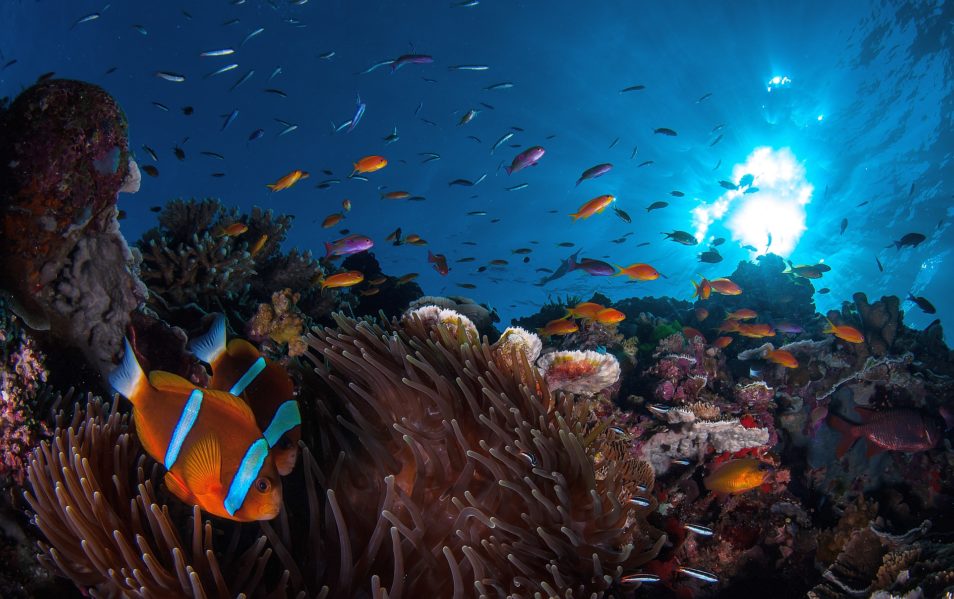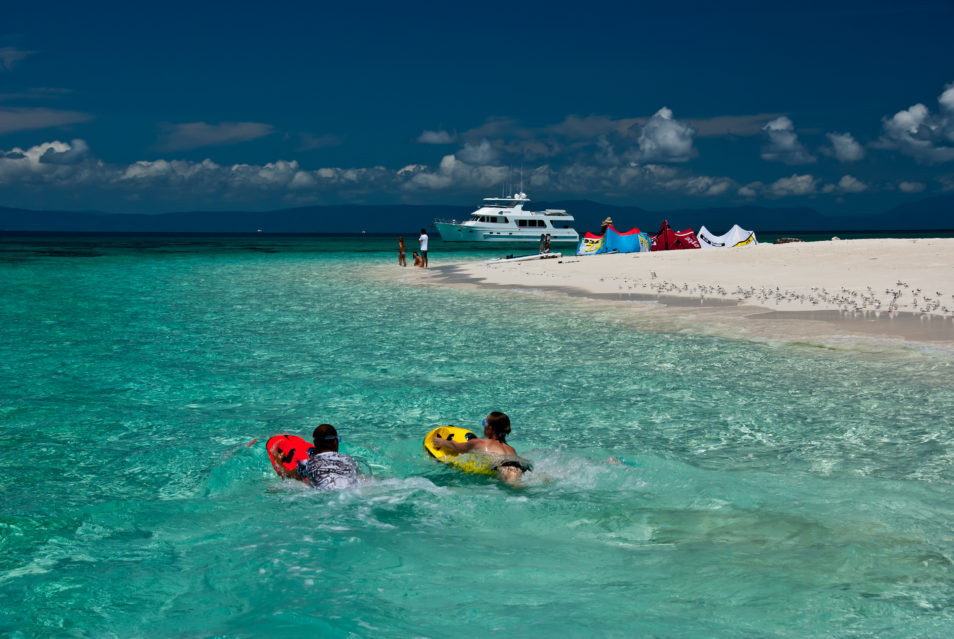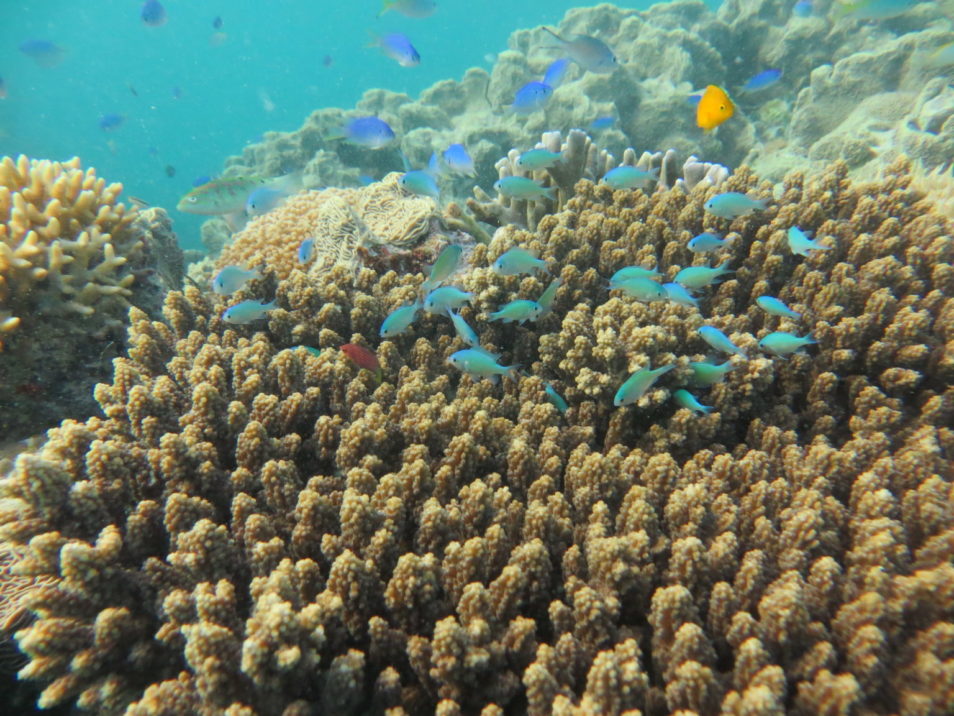
The beautiful Great Barrier Reef is home to some iconic fish friends. Like these two Clown fish at Steve’s Bommie, north of Cairns. Photo by Matt Curnock
Pop your virtual snorkel on and swap your slippers for some flippers. We are taking you for a dive into summer on the Great Barrier Reef!
What better way to virtually explore this Aussie icon over the warmer months than starting with the ‘engine room’ (coral). Our virtual tour is brought to you by a new Reef snapshot for summer 2019-20. This snapshot has been produced by the Australian Government’s leading management and science agencies for the Great Barrier Reef.
We have joined forces to release the first summer snapshot of the world’s largest coral reef. The reef stretches more than 2300 kilometres from the top of Queensland down to Bundaberg, in central Queensland. This joint snapshot, we created with the Great Barrier Reef Marine Park Authority (the Authority) and the Australian Institute of Marine Science (AIMS) provides a summary of the conditions faced by the Reef this summer and what this means for corals.
This summer’s climate impact on the Great Barrier Reef
Summer is recognised as a critical time for the health of coral. The greatest threat to the Reef is climate change and summer is a time when the major climate impacts express themselves.
For example, in February 2020, the Great Barrier Reef experienced the warmest sea surface on record for any month since 1900. It was 1.25°C above average. By comparison, February 2016 was the second warmest on record at 1.11°C above average. On 26 March 2020, the Great Barrier Reef Marine Park Authority confirmed that mass bleaching had occurred on the Great Barrier Reef due to warmer than average water.
The snapshot provides coral ‘health’ summaries for different regions of the Reef. It also highlights some of the inspiring science and management underway to better understand and protect coral.
And remember, bleached corals are not dead corals. On mildly or moderately bleached reefs, there is a good chance most bleached corals will recover and survive this event.
So there’s no need to put your virtual flippers back in the closet just yet.
Given the extensive size of the Great Barrier Reef, its condition is variable. Many areas continue to support beautiful corals and abundant marine life. The Reef remains an extraordinary experience for visitors (once we are all out of ‘iso’ of course).
So hopefully we’ve convinced you to stay in virtual tourist mode for a bit longer. Now, let us take a deeper dive into this year’s Reef over summer compared to past years.

Tourists enjoying Vlasoff Cay (near Cairns). Photo by Matt Curnock
Comparing the past summer to those in the last decade.
In general, this summer has similarities with 2015-16 and 2016-17 in terms of above-average water temperatures and heat stress for corals. However, the southern part of the Reef accumulated more heat this summer than it did in either 2015-16 or 2016-17.
Crown-of-thorns starfish continue to occur at outbreak or potential outbreak levels. This is in parts of the northern, central and (particularly) southern regions of the Reef. The COTS Control Program continues to work in all three regions to cull reefs down to non-outbreak levels. This summer was fairly unremarkable in terms of rainfall events. It was also quiet in terms of cyclones, reducing the risk coral reefs were exposed to damaging waves.
So we’ve clearly established we may not be able to physically visit the Reef at the moment due to COVID-19. But in the meantime, we can still learn plenty about this international treasure.

Underwater view of coral at Lagoon Reef, Cape Grenville. Photo courtesy of Australian Institute of Marine Science.
Collaboration is key
Many people depend on and love the Reef. This is just one reason why it is so important we work with partners to understand the Reef’s health. And that we do everything we can to protect it.
This snapshot reflects all three Australian Government agencies’ complementary contribution to preserving the economic, societal and environmental value of the Reef. AIMS brings a range of expertise, including long-term understanding of how disturbances affect the cycles of coral decline and recovery. This knowledge helps the Marine Park Authority with its ongoing Reef management. It also enables both our organisation and AIMS to help protect coral reefs through reef adaptation and restoration science.
The snapshot is not a full scientific report. It is simply a timely summary of the information available so far on how the summer unfolded. It sets the scene for the more comprehensive analyses in annual reports that come out mid-year from key coral monitoring programs, such as the AIMS Long-term Monitoring Program.
This snapshot helps inform us all, as we all have a stake in ensuring the Reef’s future.
The three organisations acknowledge the impact COVID-19 is having on businesses and communities. When it is safe to do so, people are encouraged to see the Reef, love the Reef, and importantly protect the Reef.
Happy virtual snorkelling…

